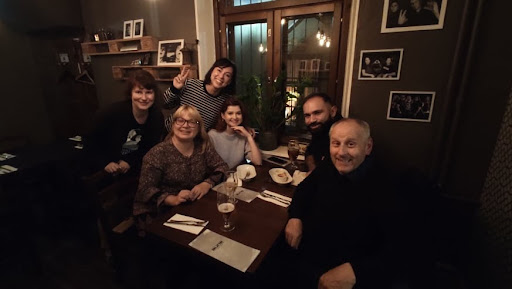
Priit Mikk: magistriõpingutest saadud kontaktid ja sõbrad on jäänud kogu eluks
Priit Mikk on Eesti Muusika- ja Teatriakadeemia kultuurikorralduse magistriõppe vilistlane, kes on valdkonnas tegutsenud juba üle 20 aasta. Ta juhib üritusturundusagentuuri ning on üle kümne aasta andnud kultuurikorralduse alaseid loenguid mitmes Eesti kõrgkoolis, sealhulgas Eesti Muusika- ja Teatriakadeemias. Lisaks on Priit juhtinud Euroopa kultuuripealinna Tartu 2024 ettevalmistusi.
Küsisime Priidult, kuidas ta kultuurikorralduse erialani jõudis, mida magistriõpingud Eesti Muusika- ja Teatriakadeemias talle andsid ning millised võimalused ootavad eriala lõpetajaid ees.
-
Loe artiklit
Kuidas leidsid tee kultuurikorralduse eriala juurde? Mis Sind selles köitis?
Nagu ka paljudel teistel kultuurikorraldajatel, sai ka minu teekond alguse koolipidusid korraldades. Sealt sai kinnitust teadmine, et ürituste korraldamine on see valdkond, millega tahan oma tööelu siduda. Pöördepunktiks oli Saku Suurhalli avaüritusel osalemine – see tekitas huvi, kuidas niivõrd suurejooneline üritus sünnib. Ülikooli kõrvalt läksin tööle üritusturundusagentuuri ning tänaseks olen üle 20 aasta valdkonnas aktiivselt tegutsenud. Klassikalise kultuurikorralduseni jõudsin 2009. aastal, kui liitusin Live Nation Estonia tiimiga ning aitasin korraldada Madonna kontserti.
Olen töötanud ka Rahvusooper Estonia produtsendina ning juhtinud Euroopa kultuuripealinna Tartu 2024 ettevalmistusi. Sel suvel olen taas laulupeo korraldusjuht – see on üks erilisemaid kultuuriüritusi, mille korraldamise juures olla.
Mida magistriõpingud Sulle andnud on? Milliseid võimalusi ja uksi on professionaalses karjääris see avanud või kuidas on senisele karjäärile hoogu andnud?
Lühike vastus on: inimesed! Koolist saadud kontaktid ja sõbrad on jäänud kogu eluks. Sama valdkonna inimestega koos õppides tekib tugev võrgustik, mis on nii tööalaselt kui ka isiklikult väga väärtuslik. Sama tähtis on akadeemiline pool – magistriõpe on andnud uusi teadmisi ja laiema arusaama kultuurikorraldusest.
Magistrikraad avab uksi ametikohtadele, kus see kvalifikatsioon on nõutud, aga veelgi olulisem on, et see loob tugeva aluse valdkonnas laiemalt tegutsemiseks. Ilma magistrikraadita poleks ma tõenäoliselt kandideerinud Tartu 2024 juhiks.
Millised väljavaated ja võimalused ootavad eriala lõpetanuid ees?
Kultuurikorralduse magistriõppe lõpetajatele on väljavaated väga mitmekesised – alates festivalide ja kontserdikorraldusest kuni loovettevõtluse, kultuuripoliitika ja rahvusvahelistes kultuuriorganisatsioonides töötamiseni välja.
Tööd leiab nii avalikus kui ka erasektoris, samuti on võimalik ise midagi algatada või liituda rahvusvaheliste projektidega. Kui inimesel on ideid, pealehakkamist ning huvi kultuuri vastu, siis annab see eriala kõik vajalikud tööriistad, et oma visiooni ellu viia. Eesti kultuuriväli vajab uusi tegijaid, kes tahavad midagi päriselt muuta ja luua.
Eesti Muusika- ja Teatriakadeemia ning Estonian Business School’i ingliskeelne kultuurikorralduse ühisõppekava annab Sulle teadmised ja oskused kultuurivaldkonnas professionaalina töötamiseks.
Avalduse esitamise tähtaeg on 28. aprill 2025. Küsimuste korral palume pööduda: vastuvott@eamt.ee

Gerli Aet Arras: kultuurikorralduse magistriharidus andis suurepärase aluse muusikavaldkonnas professionaalina tegutsemiseks
Gerli Aet Arras lõpetas Eesti Muusika- ja Teatriakadeemia (EMTA) kultuurikorralduse magistriõppe 2023. aastal. Tema haridustee sai alguse Tallinna Muusikakeskkoolis, jätkus EMTA-s kooridirigeerimise erialal ning viis sealt edasi kultuurikorralduse magistrisse.
„Ma avastasin selle programmi juba bakalaureuseõpingute ajal, aga alguses mõtlesin, et võib-olla peaks mul olema teistsugune erialane taust. Ma ei julgenud kohe kandideerida ja võtsin mitu korda hoogu. Lõpuks, koroonaajal, kui oli rohkem aega, mõtlesin, et kirjutan avalduse valmis ja proovin,“ meenutab Gerli.
-
Loe artiklit
Soov kultuurikorraldusega tegeleda ei olnud juhuslik. Gerli oli varasemalt seotud nii lauluvõistluse “Tähtede lava” läbiviimise kui ka kultuuritöö korraldamisega lastekooris “Ellerhein”. Lisaks tundus ühisõppekava Estonian Business School’iga (EBS) hea ning kasulik võimalus – kuna kultuuritaust tal juba oli, siis tekkis soov kultuurikorralduse magistriõpingutest saada juurde ka teine – korralduslik ja juhtimise pool.
Õpingutest töömaailma
Juba magistriõpingute ajal asus Gerli tööle Eesti Muusika- ja Teatriakadeemia kontserdi- ja etenduskeskusesse kontserte korraldama. Lisaks erialastele teadmistele ja oskustele andis magistriõpe juurde ka julgust teha valikuid, võtta vastutust ning liikuda uude valdkonda. „See andis mulle usu ja kindluse, et ma võin ja suudan sellega tegeleda,” on Gerli oma uues ametis veendunud.
Lisaks loengutes-seminarides õpitule peab Gerli väga oluliseks ka seda, mida õpiti kursusega üksteise kogemustest. „Meil oli väga äge rahvusvaheline seltskond, ka Eesti tudengid olid väga erineva taustaga. Oli teatrijuhte, koorimuusikaga seotud professionaale, muusikakorraldajaid jne. See, kui palju me üksteiselt õppisime, oli tohutult väärtuslik ning inspireeriv,” on Gerli tänulik.
Tulevik on seotud muusikaga
Gerli on oma erialase valikuga väga rahul ja on kindel, et ka tulevikus jääb ta muusikaga seotuks. „Usun, et minu muusikaline hariduslik taust ja nüüd ka põhjalikud teadmised kultuurikorraldusest on suurepärane kombinatsioon muusikavaldkonnas professionaalina tegutsemiseks,” on Gerli veendunud.
Mitmekülgne ja ootamatu
Kultuurikorralduse magistriõpet iseloomustab Gerli kolme sõnaga: mitmekülgne, inspireeriv, ootamatu. „Ootamatu selles mõttes, et ma ei saanud sealt seda, mida arvasin saavat – vaid hoopis palju rohkemat. Ma ei teadnud, kuhu ma astun, aga kui välja tulin, mõtlesin: vau, see oli väga-väga kihvt periood.”
Õpe hõlmas väga erinevaid valdkondi – muusikat, teatrit, muuseume, kultuuripoliitikat, ärikorraldust. EBS-i ained andsid teadmisi raamatupidamisest kuni kultuuridevahelise suhtluse ja juhtimiseni välja. „Ükskõik, kas inimene tahab töötada muuseumis, teatris, kultuuriministeeriumis või festivalikorralduses – siit saab igale poole kaasa tugeva aluse,” on Gerli veendunud.
Soovitus sisseastujatele
Gerli soovitab kultuurikorralduse magistriprogrammi inimestele, kellel on kultuuritaust ning soov ise midagi korraldada ja ära teha – mitte lihtsalt valdkonnaga tutvuda. „Kui sul on huvi ja tahe, siis on see täiesti ideaalne koht. Tegemist on tõeliselt silmi avardava õppekavaga ning kahe väga põneva aastaga,” usub ta.
Ta on kindel, et sama oluline on ka õppija isiklik valmisolek ja hoiak. „Mina sattusin siia õppima täpselt õigel hetkel. Olin avatud, 100% kohal ja tahtsin õppida. Jah, oli ka hommikuid, kus mõtlesin, et täna ei jaksa, aga enamuse ajast suutsin siiski olla kohal ja teha päriselt kaasa. Ja just siis saadki sellest kogemusest kõige rohkem,” leiab Gerli.
Kultuurikorraldaja väljakutsed ja võimalused
Kultuurikorralduses tuleb olla valmis ootamatusteks – olgu need seotud poliitika, keskkonna või ühiskondlike muutustega. „Meie töö ei toimu vaakumis. Peame arvestama kas või sellega, kuidas mõjutavad meid sõjad, majanduskriisid või keskkonnateemad. Näiteks vene kultuuri või heliloojate esitamine tänases olukorras – see vajab tundlikkust ja tasakaalu,” usub Gerli.
Gerli rõhutab, et kultuurikorraldaja suurim väljakutse on arvestada erinevate inimgruppide ja vähemustega, säilitades samal ajal ka oma väärtused. „See ei ole lihtne, aga see teebki selle valdkonna huvitavaks.”
Tema kogemus kinnitab, et kultuurikorralduse õpe andis selleks kõigeks väga tugeva aluse. „Ma ei tea, kas mõni teine eluetapp suudab veel sama palju mu silmaringi avardada kui need kaks aastat Eesti Muusika- ja Teatriakadeemias,” ütleb Gerli.
Eesti Muusika- ja Teatriakadeemia ning Estonian Business School’i ingliskeelne kultuurikorralduse ühisõppekava annab Sulle teadmised ja oskused kultuurivaldkonnas professionaalina töötamiseks.
Avalduse esitamise tähtaeg on 28. aprill 2025. Küsimuste korral palume pööduda: vastuvott@eamt.ee

Kertu Raja: kultuurikorralduses paeluvad mind võimalused rikastada kogukondi ja pakkuda väärtuslikke elamusi
Kertu Raja on Eesti Muusika- ja Teatriakadeemia kultuurikorralduse magistriõppe üliõpilane, kelle senine tegevus on tihedalt seotud kultuurivaldkonna edendamisega. Ta on töötanud tantsuõpetajana mitmetes huvikoolides üle Eesti ning pühendanud suure osa oma elust noorte tantsu õpetamisele ja muusikalitantsu arendamisele.
-
Loe artiklit
Kirg kultuuri vastu on saatnud Kertut kogu elu. „Juba varases lapsepõlves osalesin teatrilavastustes, külastasin erinevaid muusika- ja tantsufestivale ning kogesin, kuidas kultuur suudab inimesi ühendada ja inspireerida,” meenutab ta. Kultuurikorralduse magistriõpinguteni jõudmine oli seetõttu loomulik samm – võimalus ühendada senine kunstiline ja pedagoogiline kogemus juhtimis- ja projektitöö oskustega. „Mind paelub võimalus luua ja korraldada kultuurisündmusi, mis rikastavad kogukondi ja pakuvad väärtuslikke elamusi,” rõhutab Kertu.
Magistriõpingud avardavad võimalusi
Kultuurikorralduse magistriõpingud on andnud Kertule võimaluse mõista kultuurivaldkonna toimimist süvitsi ning omandada teadmisi, mida igapäevatöös kohe rakendada. „Olen saanud praktilisi teadmisi projektijuhtimisest, turundusest ja organisatsiooni arengust, mis on aidanud mul oma töös edukam olla,” sõnab ta.
Oluline roll on olnud ka kontaktvõrgustiku laienemisel – õpingute jooksul on Kertu leidnud uusi koostööpartnereid ning saanud ligipääsu võimalustele ja keskkondadele, kuhu ta ilma kultuurikorralduse magistriõpinguteta tõenäoliselt ei oleks sattunud. “See on andnud võimaluse panustada laiemalt kultuurivaldkonna arengusse,” tõdeb Kertu.
Kultuurikorraldus loob tulevikku
Kultuurikorralduse magistriõppekava lõpetajatele avaneb Kertu sõnul mitmekesine tööpõld – võimalik on töötada kultuuriasutustes, rääkida kaasa kultuuripoliitikas, korraldada festivale või üksikprojekte, juhtida kultuuriorganisatsioone või alustada oma loomeettevõtet.
„Kultuurikorraldus on pidevas arengus ning selles valdkonnas tegutsedes on võimalik luua midagi püsivat ja mõjutada positiivselt kogu ühiskonda,” usub Kertu.
Eesti Muusika- ja Teatriakadeemia ning Estonian Business School’i ingliskeelne kultuurikorralduse ühisõppekava annab Sulle teadmised ja oskused kultuurivaldkonnas professionaalina töötamiseks.
Avalduse esitamise tähtaeg on 28. aprill 2025. Küsimuste korral palume pööduda: vastuvott@eamt.ee.

Bringing people to activities, challenge and pleasure
Written by Isidora Salcedo de la O
Isidora Salcedo de la O is a young cartoonist and comedian from Santiago, Chile, now based in Tallinn, as she’s in the final year of her Cultural Management master’s studies. She has published graphic novels, including Diaries of an Au Pair, and is currently working on her third book, inspired by her experiences in Estonia. Her interests include audience development, children’s engagement with culture, literature, and fine arts.
-
Read blog
As a teen, I used to ask my grandmother what she did when she was my age. She didn’t think twice: “With my best friend Gabriela, we subscribed to a book club and received books in the mail once a month. We would exchange books to read more, and after a while, we would sell them. With that money, we usually bought tickets to the movies, went on dates, and met boys.”
Nowadays, the lives of teens are very different; there is less time for leisure activities.
All of this is compounded by the constant presence of social media and technological devices. Life is fast-paced and full of trends. In this context, cultural activities and practices such as reading, going to the movies, or attending a museum compete with numerous extracurricular activities, social media, and the wide range of streaming services. In this complex and tight scenario, understanding and being aware of the audience’s needs, desires, and lifestyle is key for cultural institutions to retain existing audiences and expand horizons to new ones. However, how can we achieve or gain this type of knowledge or understanding? Currently, in the cultural field, we rely on experts who answer, reflect, and analyze these questions daily. Some of these experts are Daniela Millar, Pepe Zapata, and Macarena Cuenca, among others.
Recently, I had the opportunity to interview Macarena Cuenca. But who is Macarena? She holds a PhD in Leisure & Human Development and is an associate professor at Deusto Business School. She is also a researcher at the Institute of Leisure Studies of the University of Deusto (Bilbao, Spain). Her main line of research is cultural audience development, the topic of her doctoral thesis. She teaches at the postgraduate level at various universities and has led and participated in several competitive European and domestic research projects.
In the interview, we discussed several topics related to audience development in the reading atmosphere, such as the role of audience development in public institutions like schools and libraries, the relationship with new technologies such as phones and e-books, and the differences between current readers and those in the past. There was a significant emphasis on empathy—understanding who they are, what they do, how they spend their time, and what their struggles are in achieving or experiencing cultural activities.
Having this type of understanding can help design or create appropriate atmospheres or spaces for this group. For example, if we see that a museum is losing the number of families that visit, it is important to understand the group. What types of activities do they do on weekends? What are the challenges of going out with a family with kids? How do these families arrange their activities, and how do they find them? To gain this type of knowledge, there are several methods such as interviews, surveys, focus groups, and persona models, among others. Additionally, to understand their movements or actions in the cultural institution, one could follow the same actions that an audience member might take, such as going to an activity with a stroller.
Conclusion
In conclusion, cultural institutions such as museums, concert houses, and theaters, among others, generally desire that people engage with their programs and attend them. However, technology, social phenomena, and trends change our behavior and cultural patterns. As Macarena Cuenca mentioned in the interview, 20 years ago we didn’t have WhatsApp, and planning activities with a group of friends or family was much more rigid and structured. Currently, with the prevalence of WhatsApp and the internet being more widespread, we can change our plans last minute with friends on WhatsApp, or we can buy tickets online for a performance at the last moment. It is crucial for these types of institutions to pay attention to the attitudes and actions of audiences to integrate new audience members and improve the current audience experience.

Afterthoughts of a recent graduate from Ukraine
Written by Asta Nykoniuk
Modern technologies are developing at an increasingly fast speed, therefore, to avoid being left behind by competitors and audiences, the cultural sector and museums could start adapting to the social and technological changes modern technologies brought with them, and get comfortable using them in practice, to keep relevance, interest, and attention among all visitors, and especially the younger ones. The main research question of my thesis study was, how do young people experience gamification in museums? The participants were 6 undergraduate students of the Estonian Academy of Music and Theatre.
-
Read blog
They generally reported the beneficial impact of gamified technologies on their visitor experience, learning, attention, motivation, interest, engagement, and well-being. The importance of the balance between gamified learning, non-gamified learning, and the human factor in them was pointed out, as well as the balance between different types of technologies used. Participants highlighted that all the information should be available in both, gamified and non-gamified ways, and all the sensory receptors should be stimulated, not just visual ones. Gamification needs to make visitors comfortable to play, touch, and experience things, and encourage them to participate and not just look from aside, for an improved visitor experience. My thesis study puts focus on the development orientation and gives suggestions for future research and managerial application of the findings.
This project was financed by the Estonian Ministry of Foreign Affairs from the funds of development cooperation and humanitarian aid. Their grant enabled me to devote all my free time to the research and thus significantly increased its quality and academic value. This, in turn, benefited the cultural sector of both, Estonia and my home country Ukraine, as both now have one more specialist at their disposal (me), who will indubitably work on further theoretical and practical implementation of this knowledge in the future, in both countries.


Supporting live music through spatial measures in the post-industrial urban space
Written by Elinor Onga
Elinor Onga is a cultural management student at the Estonian Academy of Music and Theatre whose pursuit for bettering the situation of local urban live music ecologies has led her to write her thesis on the same topic, with a focus on the socio-spatial aspects of live music ecologies and how to better support them through different infrastructural and policy measures. Having been active in more alternative cultural circles for years, she has seen first-hand the cultural and social significance of small-scale venues and DIY events and recognizes their struggle for survival. She is also passionate about fostering healthy nightlife culture, which would support creative communities and create inclusive cities with strong identities. She graduated Tallinn University in 2020 with a degree in philosophy and cultural studies and finished the INTRO program at Music Estonia in 2022.
-
Read blog
THE IMPORTANCE
Recent research has turned towards an understanding of live music spaces as an integral part of the cultural, social and economic relevance of a modern urban city. The post-industrial space has become a tool to reach all those objectives through urban planning and infrastructural measures, yet many still undermine the importance of the cultural and social over the economic. This issue is noticeably prevalent in live music ecologies, such as venues, festivals and temporary spaces, where a lack of regard or priority towards these places in urban planning causes them to suffer the consequences by the impact of their environment. These consequences prevent the healthy flourishing of small grassroots live music ecologies, which in turn have a negative effect on creative communities, diversity, inclusivity, and the city itself.
THE PROBLEM
Live music needs somewhere to take place and because of this it is constantly affected by its environment and inversely also affects its environment. This issue mostly manifests either with a lack of place between residential and commercial areas with live music spaces becoming an annoyance to the people living and working there because of obstreperous crowds and the venues having an inconvenience with finding a solution to the complaints. Densification is forcing these ecologies to move their operations to more derelict areas of town where previous examples have shown the emergence of culture and nightlife assuredly brings about the gentrification of the area. This gentrification brings its own issues, with rent prices surging and the buildings being rented out to more high-value renters. Because these venues often can’t keep up with the rising prices and start facing further complaints from their new neighbors, they are once again forced to move or close down. Gentrification is a global epidemic and not only are live music spaces in danger, which is why modern urban planning must consider the problem before struggling with it. Ironically, while culture is often used to attract new people to previously run-down areas of town, the subsequent gentrification often leads to such high rent prices that the artists and venue owners can no longer afford to stay there. A bitter turn of events, since it is their work that improved the image of the area in the first place.
Live music ecologies then lack a proper support system, financial aid and consequently, good urban planning considerations that could help them thrive in an area. It almost seems as if in some urban cities they are doomed to live in constant change with no certainty of their future.
THE SOLUTION
Yet, the situation is not hopeless, and measures exist to potentially solve this issue. The foundation for the solutions starts with live music spaces being supported by urban planning and infrastructural measures. This includes having designated areas for cultural activities where they wouldn’t face the issue of gentrification or noise complaints by bringing together different actors with similar goals. These can be planned in otherwise unused areas of town and secured against gentrification through policies and agreements to keep the essence of the space for cultural activities only. This would also solve the issue of noise complaints since residential areas would be kept at an appropriate distance. Public stages and festival areas could be built for outdoor events, which also consider the area in a way that it doesn’t inconvenience near neighborhoods. Town could also adopt the agent of change principle which ensures that new neighbors are aware of the venue that was previously there and have to consider the possible noise issues.
In essence, urban planning should support the social and cultural values instead of focusing on maximizing economic gain, which usually leads to a densified and messy infrastructure for cultural activity.
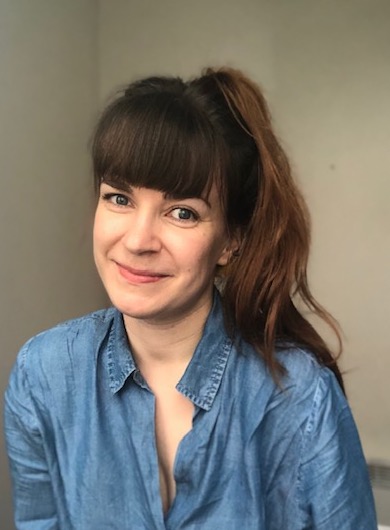
Taking a digital leap in performing arts – study trip report from Terrassa, Catalunya
Written by Anni Leino
-
Read blog
Digital Leap is a two-year international project that offers dance and circus professionals learning opportunities for deepening understanding of digital environments and their possibilities in performing arts. The key question behind the project is, how to promote and distribute performances digitally and virtually, without compromising the essential live experience.
As part of the Estonian Academy of Music and Theatre’s open seminar module, I participated in the project’s third set of workshops organised in Terrassa, Catalunya, on Oct 4-8, 2022 by the local partner Institute Ramon Llull. The project’s themes are closely related to my MA thesis which concentrates on opportunities for online events in performing arts promotion. Dance Info Finland supported my trip to Terrassa.
Digital Leap is an EU-funded Erasmus+ project organised by Dance Info Finland, and Circus Info Finland, together with ARTCENA (FR), Arts and Theatre Institute (CZ), Danscentrum Sverige (SE), Institut Ramon Llull IRL (ES), Lithuanian Dance Information Centre (LT) and Performing Arts Hub Norway (NO). More information on the project can be found here.
Expanding artistic practices at the computer desktop
In the Terrassa module, the project invited participants to reflect on the possibilities that the internet has to offer in the realm of performing arts distribution. A selection of experts was there to provoke thinking outside the box and expand the tangible limits of artistic practice to reach new targets and get new communities online to broaden engagement.
The main venue for the workshops was a beautiful old theatre Teatre Principal in the centre of Terrassa. Re-scheduled and routed flights got us to Terrassa one day later than planned so I missed Tuesday’s keynote speech on the topic of “context is content” by Bani Brusadin & Nil Martín and the panel discussion about “software for online distribution”. Anyhow arriving later than others didn’t cause too much harm and on Wednesday we continued with the second part of the lecture by Brusadin & Martín.
The ones who attended the first class on the previous day were asked to look for social media phenomena that interest them, not necessarily a viral thing, but more like a subculture, weird, intriguing, online movement (one example was brought up from Reddit was called worn out – people posting pictures of new stuff and then pictures of the stuff after its totally used with no explanation). Brusadin and Martin were leading and moderating the discussion which flowed from the concept of online phenomena to the power of algorithms (we all see different stuff), to online subcultures and communities, and imitation as social online phenomena (is there anything unique anymore?), to online culture and memes etc.
Overall the discussion was very interesting, pushing gently towards playfulness and inspiration instead of the usual “you have to be on social media”. Reddit’s collective artwork was an exciting example of collective online art, where users could buy pixels that would form a piece of visual art. We talked about how niche contemporary artists could find a global audience online but how it requires a willingness to discuss and be in dialogue online (though this could mean something else than just writing or talking). A great example of playfulness in an online context was the Art bot which is an algorithm that turns the latest media headlines into artistic concepts. As an example of how the meaning of content put online can drastically change. Later on, I watched the documentary on Feels Good Man meme that showed how something innocent created online can turn out to be used for opposite purposes.
The afternoon lecture was about socially responsible tools for online management by Collective Colectic. It was a deep dive into open-source software as a social movement (which I have never thought about!). The lecture rouse the question of human rights in the era of the internet and made it clear how the legislation often comes behind innovation, applications and digital rights. how do we ensure that the software we use is ethical or ecologically produced? It can be hard (if not impossible) for an individual to know. Also, being able to critically choose the apps and platforms we use is a privilege we should acknowledge.
In the evening we took a bus ride to Barcelona to visit Institute Ramon Llull’s premises. There we took part in a panel discussion on the topic of hybrid performing arts curation from Colette Sadler (Curator, Present Futures Digital Festival, Glasgow Scotland), Vicens Vibla (Director, Euphonic Festival, La Ràpita, Catalonia) and Charles Carcopino (Programmer, Canal Connect – Teatros del Canal, Madrid Spain).
From creative online content to mock trial
Thursday, Oct 6, continued with context is a content workshop by Bani Brusadin & Nil Martín. This time the conversation went deep into digital art and its forms of it. As one of the case examples Swedish artist Jonas Lund’s project Token was introduced. The Token is a distributed decentralised autonomous artistic practice created by Lund that aims to optimise and streamline the decision-making process in art production and the strategic decisions concerning a career path. Anyone could participate in the piece by purchasing tokens (sort of NFT) from Lund’s webshop. Another example of an artist working with digitality was Lauren Lee McCarthy who examines social relationships in the midst of a surveillance, automation, and algorithmic living. We also discussed “performative activism” in the digital context where there were interesting examples of individuals taking over e.g app store’s discussion boards. Led by the examples, we had an extremely interesting discussion on digital art and creativity which in a digital format often lies in the concept.
Afternoon there was a second class on socially responsible tools for online management by Collective Colectic where we got introduced to an open-source software called Dolibarr. The day ended with a mock trial which was a rather similar group exercise we did in the law and intellectual property course at Estonian Business School. In Terrassa we had three actual court cases handling the artists’ intellectual property rights in a digital context, three law experts and us, the participants shared in three different groups forming the jury for each case. For each case, we voted and after the vote, we heard the real-life court’s decision on the case. The exercise and discussion among the group and with the experts were super interesting and made it clear that the legislation doesn’t know all of the possible cases in the context of digitality, social media and digital rights and how legislation is actually constantly updated based on new cases.
Taking time for exploring together is a luxury thing
On Friday, Oct 7, we didn’t have workshops or lectures but headed to the biggest art marketplace in Spain, Fira Mediterrània de Manresa. Manresa was an approximately one-hour bus ride from Terrassa to the north. The day started there with a pitching session where we heard 15 local music and dance artists presenting their work to international buyers. For me taking part in such an event as an international delegate was a learning experience itself and I made a lot of notes on how to develop the events I’m working in. We saw many performances in different venues which is always a blast.
Saturday, Oct 8, was the last day of the official programme of Digital Leap Terrassa. We had a lecture on the topic of mediation as a new paradigm of distribution by Marissa Paituvi at Teatro Principal. This lecture was really about the accessibility of arts and culture and the role of a producer (or artist) as a mediator. Paituvi presented the idea of cultural institutions as social agents, really being part of the change instead of just talking about it. The Digital Leap week ended with a feedback session with all the participants led by Tina Agency’s Laia Montoya and Valeria Cosi.
I’m really happy and grateful I got a chance to participate in the Digital Leap in Terrassa as a participant like any other. Usually, I’m in the position of the organiser so the trip felt like a luxury thing from beginning to end. Maybe not all of the content presented before the trip was like I assumed (content-wise) but being there and being exposed to so many interesting encounters, discussions and ideas, reminded me how important it is to take time for learning and digest the new things – also when not knowing where it would lead (this is the luxury part!). Knowing that there are other professionals thinking of online and digital possibilities in the context of performing arts and distribution gave me a sign that I’m on the right path with my work.
![]()

From the Land of Fire to the Land of Fire and Ice
An Azerbaijani’s journey exploring Iceland’s singing competition culture, and nature.
Written by Tural Abdulla
-
Read blog
Have you ever watched a music competition, voted for your favorite song, only to get upset when the song you voted for didn’t win! Depending on how invested you were in the contest, you might have just shrugged it off, thinking ‘better luck next time’, or screamed bloody murder at the television, complaining about how corrupt and unfair these kinds of competitions are, that the producers will do everything to control the outcome, or someone cheated, etc.?
But what is fairness, and to whom does it apply? To you? To the artists? To the contest itself?
To help me find answer to those questions I headed to Iceland, the Land of Fire and Ice, with the help and support from ActinArt, and I am very grateful for this opportunity given to me!
And who am I, you might ask. Well, I am a huge Eurovision fan, and I have the privilege to have Eurovision as a focus for my master studies in Cultural Management at the Estonian Academy of Music and Theater in Tallinn. I am originally from Baku in Azerbaijan, the Land of Fire, but I have been living in Estonia for close to a decade now. I’m also the vice-president of the official Azerbaijani Eurovision fan-club OGAE Azerbaijan, for which I also do interviews with artists. If interested, check out our YouTube channel.
Eurovision
For those of you that are unfamiliar with The Eurovision Song Contest, it is an annual international singing contest organized by EBU – The European Broadcasting Union. More than 40 different countries participate, each represented by a song, the artist(s) performing it, and the national broadcaster from that country that is member of the EBU. Each year, upwards 200 million people watch the contest unfold on the small screen in May, to see who wins this year’s trophy – or simply to see what crazy things will be on stage this year; are we going to have a burning piano on stage, a dancer in a hamster wheel, milkmaids churning butter… you never know with Eurovision!
To find out which artist gets to represent a country, the national broadcaster will hold local contests to figure this out. In some countries, this is entirely an internal process, where a panel of judges will evaluate potential candidates and simply announce who the representative is. But in many countries, this is a public selection, sometime with multiple rounds of television shows to find the final winner and representative. And this is where my journey to Iceland starts, with the Icelandic local selection show called Söngvakeppnin, which is produced by the Icelandic broadcaster RÚV.
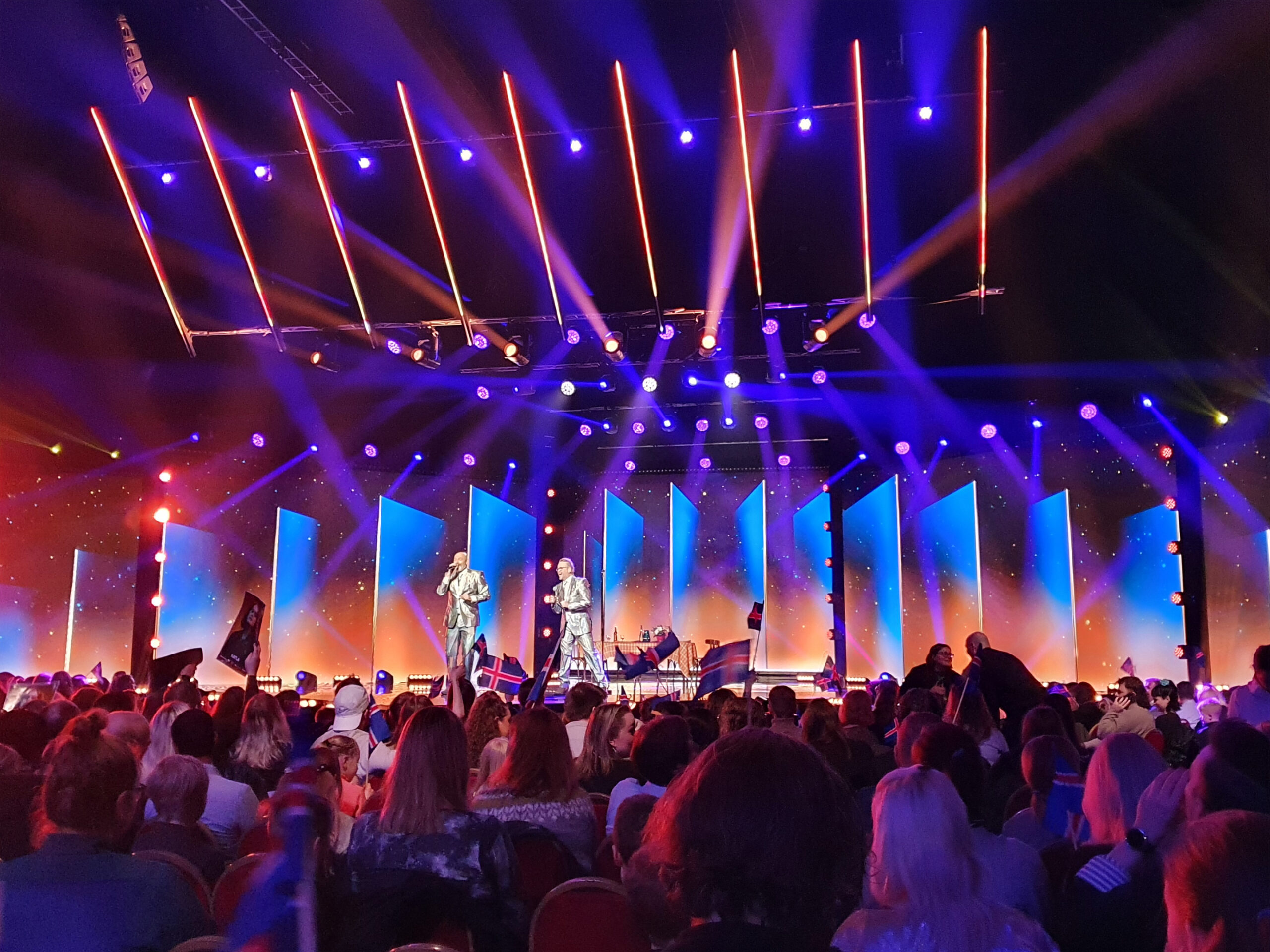
Söngvakeppnin
Söngvakeppnin (which simply translates to song contest) has been around since 1981, but Iceland, as the last of the Nordic countries, didn’t join Eurovision until 1986. Söngvakeppnin is now one of the main tv events of the year in Iceland. This year, in 2022, the reach of the finale was 63.7%.
My trip to Iceland gave me the opportunity to talk to all the finalists in this year’s Söngvakeppnin (Katla, Amarosis, Reykjavíkurdætur, Stefán Óli, and Systur (Sigga, Beta and Elín)), as well as with Felix Bergsson, the Icelandic Head of Delegation for the Eurovision Song Contest and a member of the Eurovision Reference Group. This gave me the opportunity to interview them about how they perceive fairness in Söngvakeppnin, how they feel they are being treated by the broadcaster and producers of the show, to get input on the topic of fairness on a smaller scale than that of Eurovision, but still a scale of a large TV production.
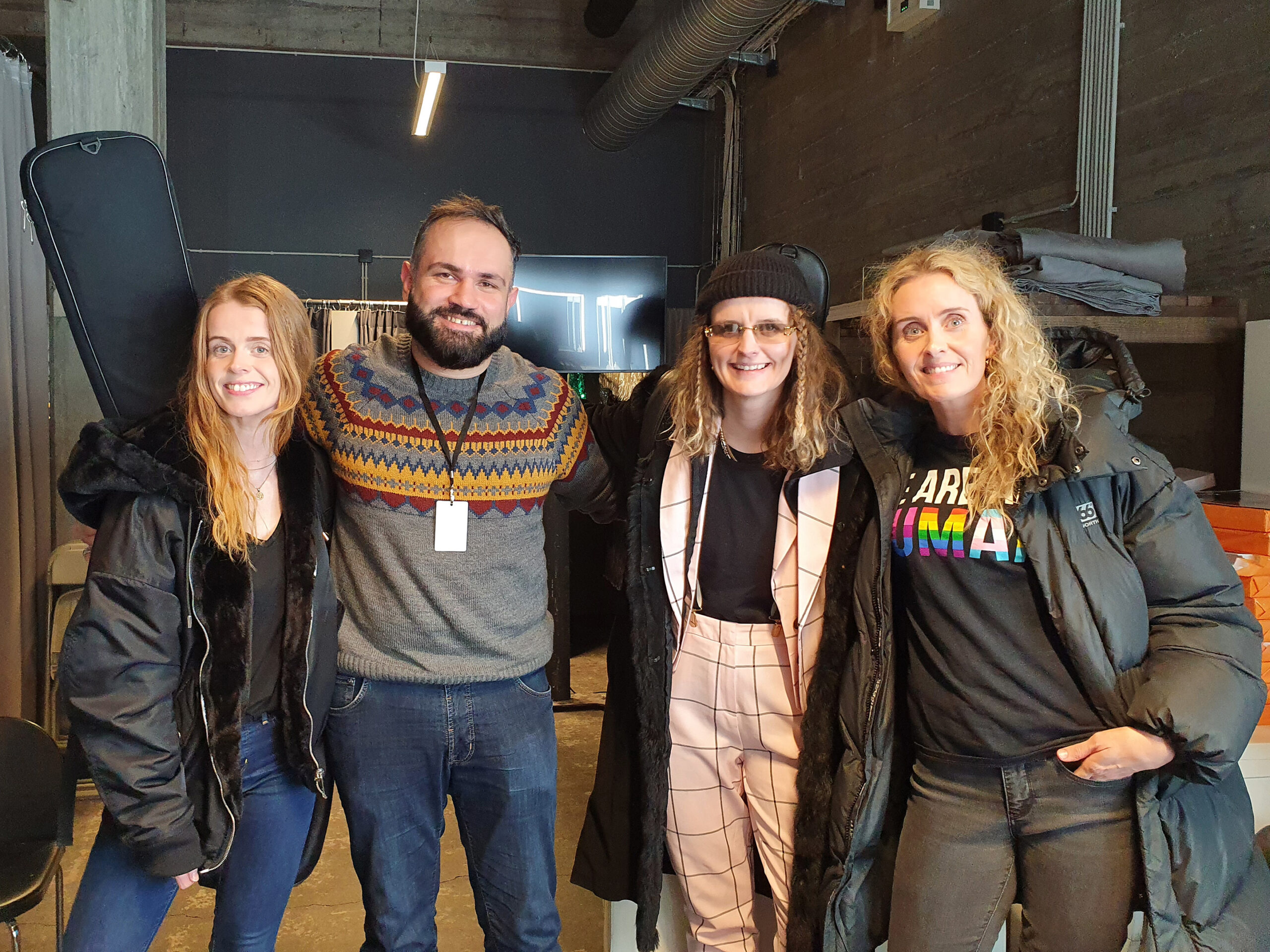
Fairness
But how do we define what is fair? Does that mean that everyone is treated exactly the same way? Does it mean that no one gets more attention that others? In a music competition show like this, is it even possible?
Walking around in Reykjavik, the capital of Iceland, where about two thirds of the Icelandic population live, there were advertisements for Söngvakeppnin and for the finalists on bus-stops and similar advertisement monitors around town. One thing I noticed in particular was that all the finalists got the same amount of advertisement time. Everyone was showcased with the number people needed to call in order to vote for them in the final show. So in that regards, it seems that everyone was treated equally!
Interviewing the artists, they were all appreciative of RÚV, and its commitment to them. They all thought they got a fair treatment in the contest, and didn’t feel like there was any form of favoritism from the producers. The artists had various degrees of experience, from Stefán Óli for whom Söngvakeppnin was the first time standing on stage in front of a live audience, to Reykjavíkurdætur, an all-female band that has performed internationally. Overall, the artists expressed that they thought the help and support they got from RÚV and the producers were fair and equally supportive.
The one thing a few mentioned as slightly unfair was the voting procedure. That anyone could vote as many times as they wanted, thus you could in essence buy the victory if you had enough money to send enough votes. To put this into perspective, in the super-final a total of 58626 votes were cast, with 35156 of those votes going to the winners Systur – approximately 12000 more votes than the runner-up. Let’s break it down a bit. The cost to vote was approximately 1.10 euro, meaning the total costs for the super-final votes was around 65000 euro. So if you had that kind of money lying around and if you could get to the super-final, meaning getting through the semi-final and initial final, which both included professional juries casting votes as well, the victory could be ensured. Those are some rather big ifs though.
With Felix Bergsson, the Icelandic Head of Delegation, the talks turned more towards Eurovision, and while he did acknowledge the existence of some voting irregularities in the form of bloc voting and diaspora voting, he didn’t think they were significant enough to have an overall negative impact of the fairness of the voting system in Eurovision.
Bloc voting is the phenomenon that some countries, in particular geographically or culturally close countries, tend to vote for each other. A clear example of this is Greece and Cyprus, which in Eurovision always give each other top points. Always. Another example are the Nordic countries, like Iceland, Denmark, Norway, and Sweden, who usually always vote for each other. Diaspora voting is similar, but where bloc voting is mutual voting, diaspora voting is one-way. This is generally caused by a large group of people from one country living in another. An example of this is Lithuanians living in Norway. In the past two decades, the number of Lithuanians living in Norway has increased significantly, and so has the points granted by the Norwegian viewers to Lithuania. Every year in the past decade, Lithuania has been among the top three countries in the Norwegian votes, even in years where no one else voted for Lithuania!
With regards to Söngvakeppnin, Felix did mention that, at some point, the broadcaster was going as far as making sure every single entry got equal amount of playtime on the public radio stations in order to make sure no kind of favoritism was in play by RÚV – who is also the broadcaster behind those radio stations. He said though, that in this day and age, with music streaming services, YouTube, and of course other private radio stations not subject to this, those restrictions didn’t have much meaning anymore, and the hard rule that every song needs the same amount of airtime has been lessened.
Personally, from what I experienced in Iceland and the short behind-the-scenes glimpse I had into the world of Söngvakeppnin, it did feel that the producers tried their best to provide an equal and fair platform for the artists to compete on. Sure, the stage-show was vastly different from act to act, with Reykjavíkurdætur being the most elaborate one. But one has to keep in mind that at the end of the day, it is an entertainment show, and what fits for a high tempo song like Turn This Around doesn’t necessarily fit for a slower folksy song like Með Hækkandi Sól. The fact that a person can vote an unlimited number of times could add some unfairness to the voting part, though I doubt this fact had any significant effect on the outcome. I do disagree with Felix though. I think bloc and diaspora voting has an impact on the fairness of the vote in Eurovision, which impacts the overall result of the competition. The contest has a rule that you cannot vote for your own country but living abroad kind of circumvents that. The technology exists today to verify a person’s nationality, but if the EBU is willing to commit to this, and people are willing to go through the process of getting verified just to vote in a contest, is a completely different topic!
Iceland
My trip to Iceland also included a few days where I had time to explore parts of the island and its breathtaking and inspiring nature, as well as the history of Iceland, and its sagas. But, while I was in awe of all the nature and sights Iceland has to offer, my wallet was screaming at me – Iceland is not exactly a cheap country to visit! But even though I visited Iceland in the middle of March, thus in wintertime, it was still beautiful everywhere you looked. I got to experience things I’ve never seen before in my life. A geyser erupting, sending water twenty meters up in the air. Walking up to and touching glaciers in their out-of-this world blue colors. Got to see the black sand beach and the crushing waves coming in that can easily drag a person with it out into the ocean if not careful – which also carries the very politically incorrect nickname “Chinese Takeaway” among some of the locals. Got to bathe in the thermic baths and smell the sulfur from some of the raw sources – this smell I could probably have done without! Bathing in these thermic pools while the air temperature is freezing is quite an experience. Your body is submerged in 40 degrees warm water, but the air temperature is minus five degrees. And on the very last night, before my flight home, I got to experience a fantastic display of northern lights in the sky! Sure, a cynic would probably complain that this particular display was mostly in the white and greenish colors, but I was still standing in awe with my mouth open, watching the lines swirl and dance across the sky!
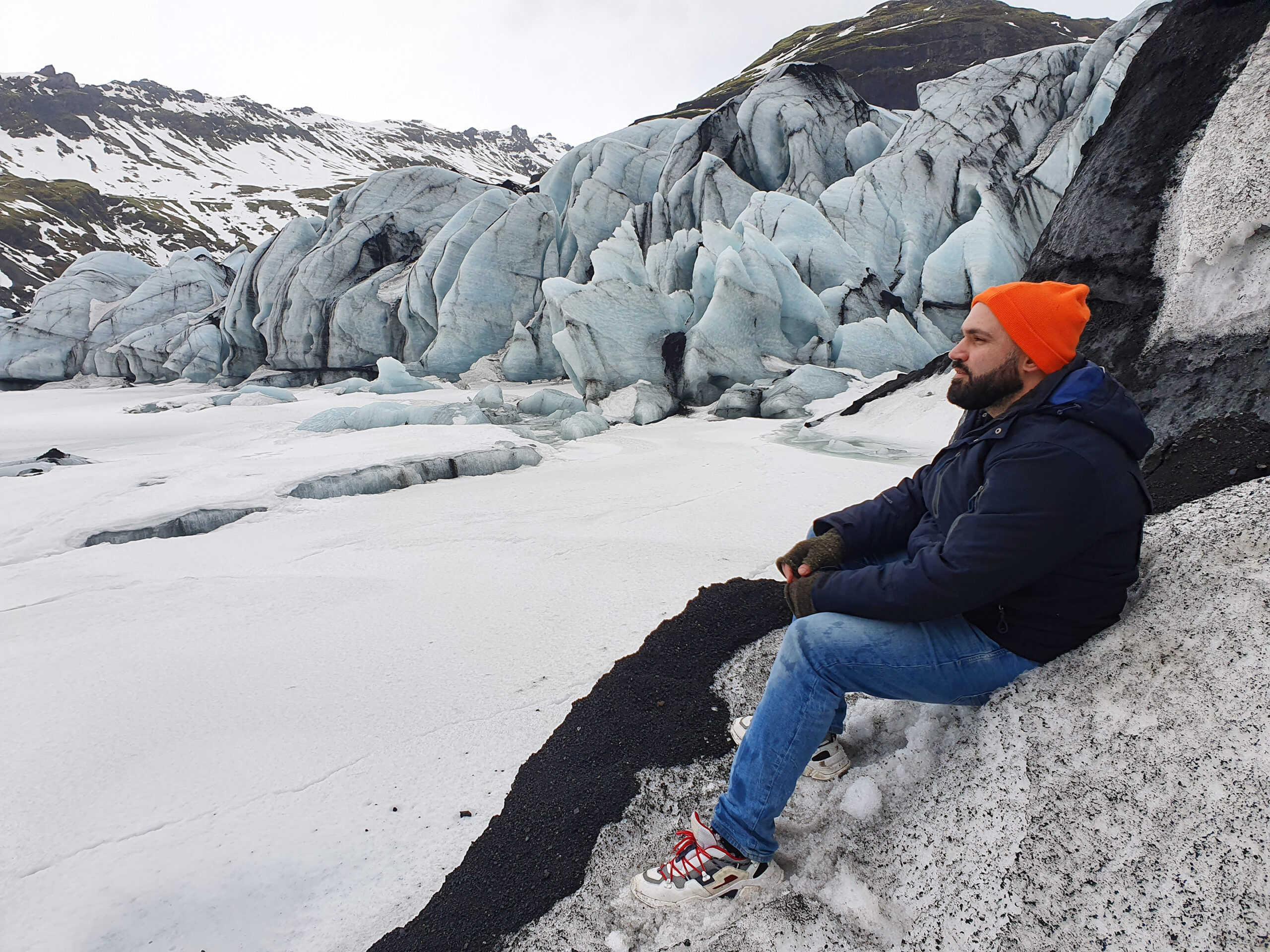
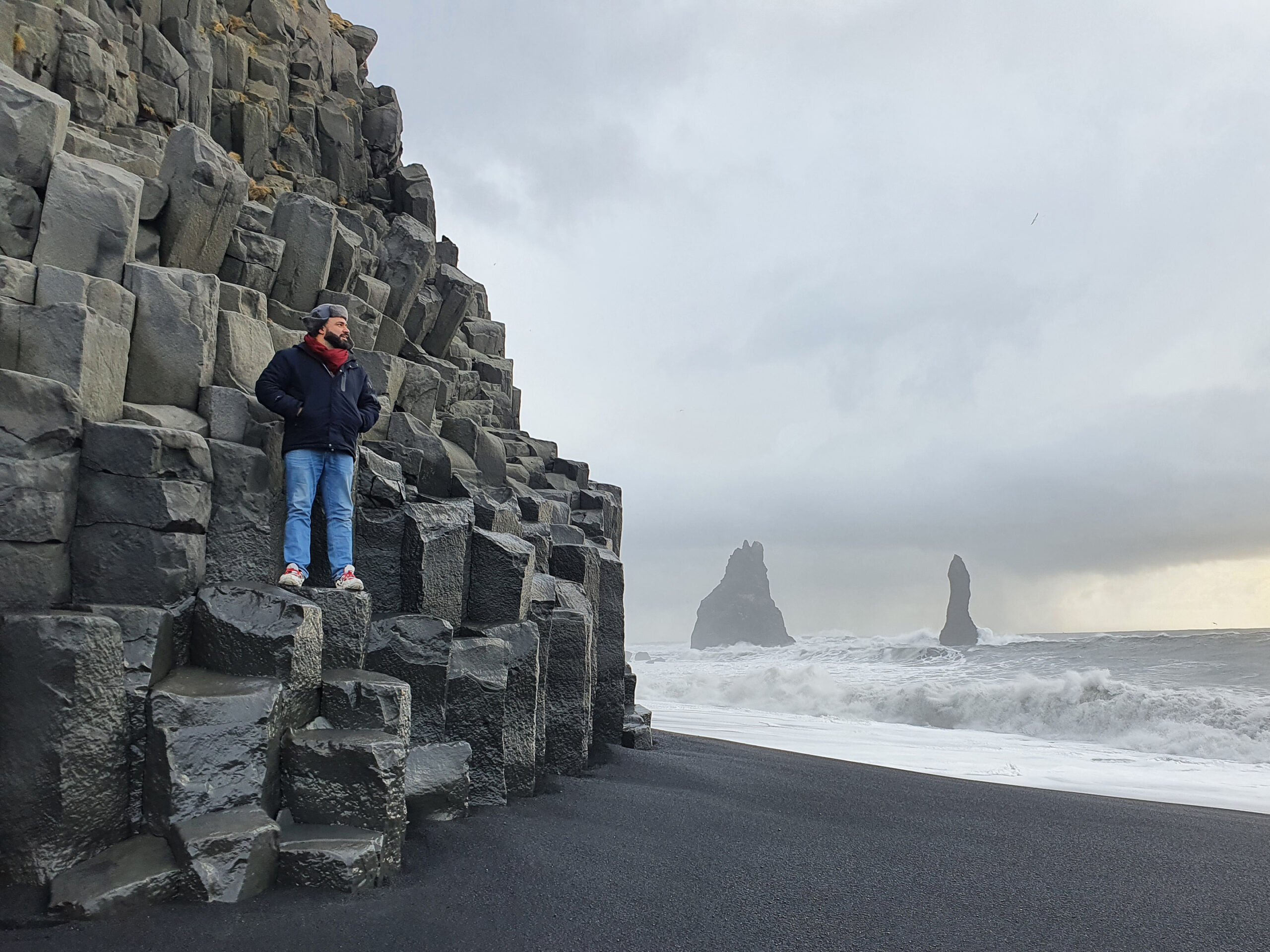
Final words
I came to Iceland with a purpose of looking at unfairness in competitions. What I found was, that for most part it was handled fairly, at least in the Icelandic selection show. Both seen from the participants point of view, as well as from the producers’ point of view.
I also came to Iceland to tick off a country from my bucket list. Iceland had for a long time been on my list of countries to visit, and oh boy, did Iceland deliver! I may have left Iceland financially significantly poorer than when I arrived, but with me home I took an experience of a lifetime!

Festival management in a new era – opportunity or nuisance?
Festival and Event Masterclass in Turku on September 15-16, 2021
Written by Kaie Tanner, Tural Abdulla, Asta Nykoniuk, Onur Mert, Tatjana Korenika.
Edited by Liisa Nurmela
-
Read blog
A group of EMTA Cultural Management MA students visited a Festival and Event Masterclass by Paul Gudgin in Turku, a popular professional development programme designed to inform and inspire anyone involved in creating, managing and supporting festivals and events. The course was built upon different parts of festival management with an emphasis on the post-covid world.
Festival and Events in a Post-Covid World
In the Post-Covid world, the importance of finding attractive festival locations, venues and innovative ideas to catch attention and involve people. It is important to study one’s hometowns and evaluate the most vital characteristics to help the city and the region thrive. After previous pandemics (like SARS in 2003) cultural events played a major role in the recovery of tourism industries – not just to attract visitors but as a signal “we are open for business”. But it can take approximately 18 months – 2 years for the tourism and event sector to reach its new potential. Another interesting note from Paul is that managers have to analyse people’s attitudes about event participation before and after pandemic according to their age, event type, preferred safety measures and expectations they have during and after pandemic to help find new concepts that are interesting for the visitors.
People and Partnerships
Paul gave a good overview about building how to build a festival team: which positions are needed, which have to be paid professionals and some can be done by volunteers and/or interns. As we saw from his presentation, the percentage of full-time, part-time and volunteer positions can differ a lot by country. The definition of a partnership is wide, there are hundreds of possibilities how partners can help an event (and event help partners), it just needs creative thinking to come up with innovative ideas to attract partners to events.
Again, it is a very intriguing subject we often need to search for volunteers and volunteering is not so natural part of Estonia. It is easier to find volunteers in the UK (and many other “old” European countries) as people are used to volunteering and thanks to higher living standards they also have more free time.
Nevertheless, we need to take into consideration the ethical questions in using voluntary help and open up a discussion of fair remuneration and recognition for volunteer work. Inters would be a great opportunity to involve them in festival management, but it might not be a prevalent practice in many countries and the internship fees are ridiculously low. A lot of young people have to collect money long in advance to do an internship.
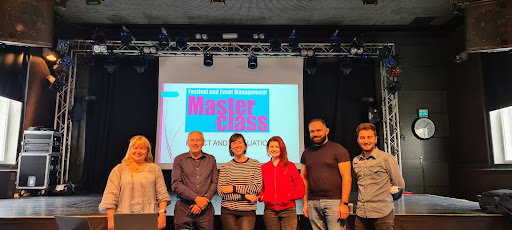
Programming
When planning a festival, one must be bold and not be afraid of new ideas. Cultural managers should ask – what is different in the festival you’re planning from other existing festivals? In other words, why would people come to your festival, and not one of the existing ones that already have a sizeable audience? Considering new and unique spaces can offer a different kind of experience to your audience and also open the festival up to new ones. If people prefer to listen to jazz, why not give them an opportunity to have that experience somewhere special, such as Jazz in the sky, or for theatre lovers, why not organize a Shakespeare story with breakfast?

Sponsorship and Fundraising
Sponsorship and fundraising is an important aspect of festival management to have sufficient funds to carry out ideas. To find valuable partners, managers have to choose the right companies who have the same values and align their mission with theirs. When presenting for a partner, tell a story – with an emphasis on what the partner will get if they support your festival. The vision sells more than your needs, and sometimes listening to your partner can open up new opportunities to work together. However, there are other sources of income for the festivals like merchandise, festival markets, mobile donations, advertising, etc. When doing merchandise make sure to make it interesting that people would like to buy it. For example, it is better not to put the year on the merchandise, since if it is not sold, you can resell them next year.
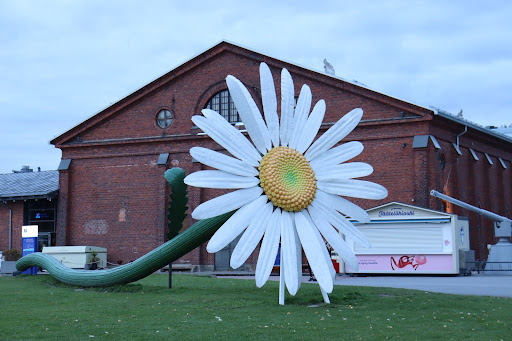
Festival marketing, festival tourism, and destination branding
Successful marketing of the events starts by identifying the targeted audience and their habits in order to plan promotions. We also need to remind ourselves of the political, environmental and cultural spheres that the event is positioned as it may open new opportunities. The financial side of promotion has to be analysed, in some cases, internet ads are more useful whereas paper ads might be less useful. Festival tourism is another aspect that significantly can affect the economic situation as the events would likely attract a huge number of participants from abroad, which would increase the tourist flow and related income to the country. However, it is important to understand how it would affect the lives of local residents. For example, drawbacks of the festival can increase the level of pollution in the area, resulting in increased expenses aimed to clean up the area. These small details matter from ethical, social, environmental, economic, and cultural perspectives, therefore, they need to be estimated thoroughly before organizing a festival.
Destination branding refers to finding the most appealing traits and specifics of a place and then advertising it in a way to highlight why it is better than its competitors. However, brands cannot be created artificially, it is co-created with the tourists. In this way, the promotion organizations use a concept that already satisfies visitors and helps to create fame and reputation for a place. One can also hire famous bloggers and celebrities, social media to promote the place and attract a wider local or international audience.
Venues, Festival Infrastructure and Media
Festival venues can be everywhere – sometimes it is a historical place, sometimes a cave! Outdoor venues and event production present a gamble, especially due to climate. It is the festival organizer’s responsibility to ensure that the strength and integrity of the infrastructure of the operational staff at the venue can effectively support and plan their events. Choosing a venue that doesn’t have all the necessary amenities means using temporary structures that can be temperamental, especially in bad weather. This increases the safety risk for staff and festival attendees. In infrastructure preparation, we should always have a plan B.
Due to the multidimensional contribution of the festivals to the country’s economy and the region where they are held, it is important to increase their awareness in the international arena and the number of participants. The fact that the websites of the festivals have effective content and the media have an important place in the marketing efforts to be implemented. Increasing awareness of festivals on the web, sharing festival experiences and facilitating reaching potential consumers, and promoting festivals at much lower costs play an important role in the media.
Festival and Event Evaluation
There are three main criteria to evaluate events – audience, knowing your sector and geographical aspect. It is important to take into account the impact that the event has on the city and country economics, social life and sustainability. Paul shared a chart with us, that is useful to make pre and post-analysis. In the end, the evaluation can help managers educate themselves and find new innovative approaches to make negative into a positive.
In conclusion, this was an interesting and eye-opening course for the group, especially getting more insight into the UK event sector. However, the Baltic and European sectors can differ and might not meet the needs of our region. Of course, the framework of a festival built-up and values can be the same but it could have more valuable to hear examples from our region.
